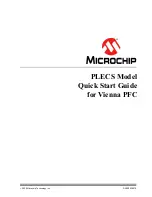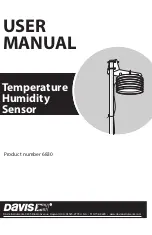12 - 5
IP
N 07
4-
50
5-
P1
E
IC6 Operating Manual
12.5 AutoTuning
The AutoTune feature of the IC6 is used to automatically characterize the response
of a system. AutoTune examines the rate change response after executing step
changes in power. Control parameters are calculated for algorithms designed for
either slow-responding systems or fast-responding systems, with PID parameters
determined for slow systems and a process gain coefficient determined for fast
sources.
There are two subsets of AutoTune. A shortened version, called Quick Tune,
calculates the required values from a fixed change in source power. The "Complete
Tune process first incorporates the Quick Tune procedure and then refines the
parameter values by operating at a set of rates established about the desired
operating point.
12.5.1 AutoTune Preparation Instructions
The following procedure should be followed to perform an AutoTune:
1
Determine the Correct System Setup
In order to ensure good AutoTune results and good source control, careful
consideration should be given to eliminating system noise, thermal shorting,
and any other factors that result in rate instabilities.
2
Verify that the Material Source parameters are correct and that at least one
sensor has been assigned to the Material to be autotuned. Choose the source's
voltage range that best suits the material and evaporation technique. Generally,
low melting point materials can use smaller ranges, while high melting point
materials may use the full range.
In a high gain system, where a small change in source control voltage results
in a large change in rate, it may be necessary to reduce the DAC output range
to avoid exceeding the Maximum Rate on the Bump power step.
3
Determine the Correct AutoTune Parameters
Material Number
. . . . . . . . . . . . Choose the index number of the desired
material.
Desired Rate
. . . . . . . . . . . . . . . Choose the rate at which to control the
deposition. This parameter is used only for a
Complete Tune.
Maximum Rate
. . . . . . . . . . . . . Choose the maximum rate the system can
handle safely (i.e., source doesn't spit,
equipment is not damaged).
Tune Type
. . . . . . . . . . . . . . . . . Choose either Quick Tune or Complete
Tune.
Содержание IC6
Страница 1: ...O P E R A T I N G M A N U A L IC6 Thin Film Deposition Controller IPN 074 505 P1E Cover Page ...
Страница 2: ......
Страница 8: ......
Страница 20: ...TOC 12 IPN 074 505 P1E IC6 Operating Manual This page is intentionally blank ...
Страница 42: ...1 22 IPN 074 505 P1E IC6 Operating Manual This page is intentionally blank ...
Страница 134: ...6 6 IPN 074 505 P1E IC6 Operating Manual This page is intentionally blank ...
Страница 148: ...8 4 IPN 074 505 P1E IC6 Operating Manual This page is intentionally blank ...
Страница 170: ...9 22 IPN 074 505 P1E IC6 Operating Manual This page is intentionally blank ...
Страница 236: ...11 2 IPN 074 505 P1E IC6 Operating Manual Figure 11 1 The essential advantage of multi point deposition sensing ...
Страница 268: ...13 2 IPN 074 505 P1E IC6 Operating Manual This page is intentionally blank ...
Страница 312: ...15 40 IPN 074 505 P1E IC6 Operating Manual This page is intentionally blank ...
Страница 338: ...A 10 IPN 074 505 P1E IC6 Operating Manual This page is intentionally blank ...
Страница 342: ...1 4 IPN 074 505 P1E IC6 Operating Manual This page is intentionally blank ...

















